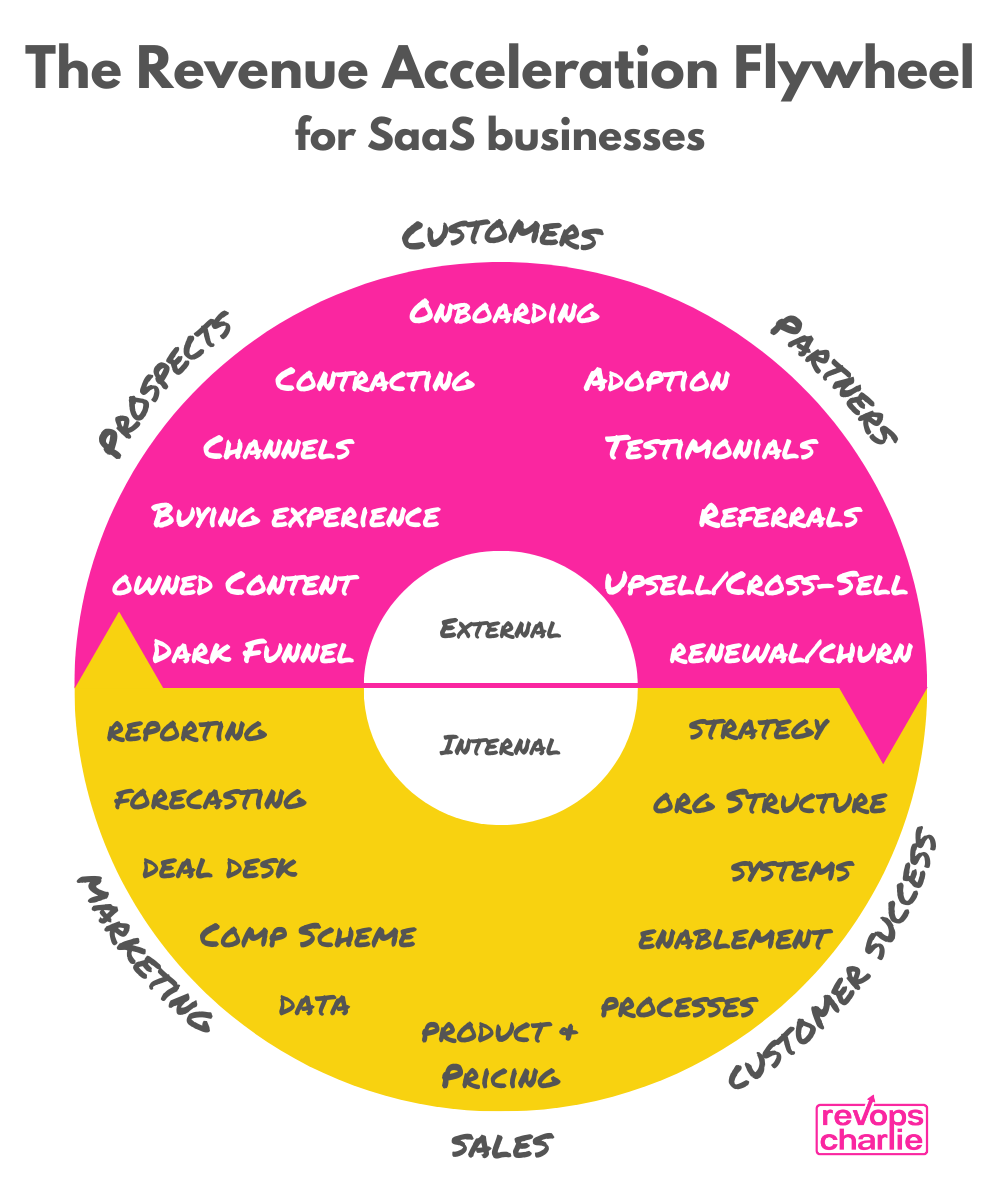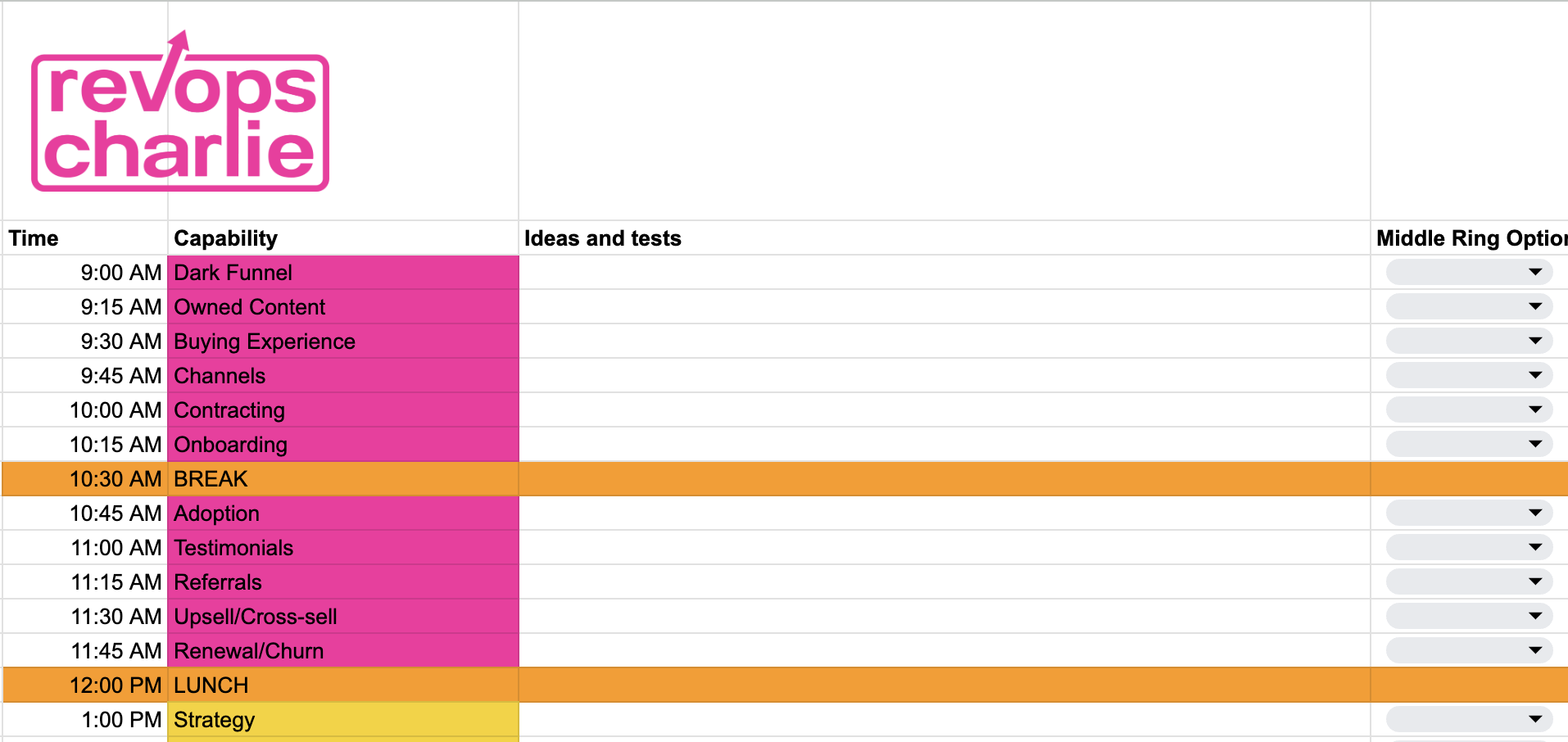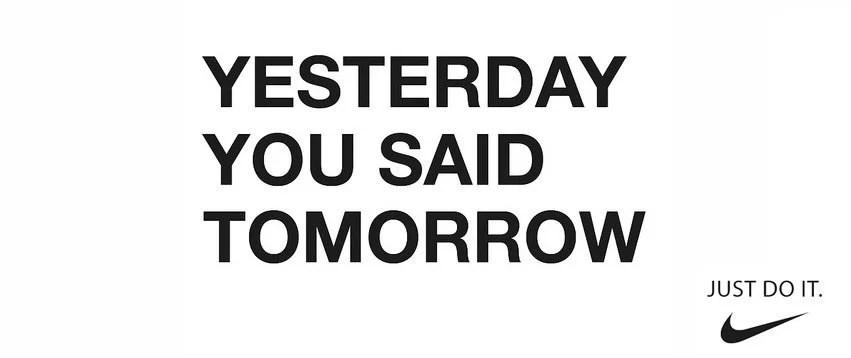Where should you start on the Revenue Acceleration Flywheel?
The Revenue Acceleration Flywheel describes the 22 capabilities that you will constantly iterate on as you build a predictable and repeatable revenue engine.
The Revenue Acceleration Flywheel
22 external and internal capabilities that drive revenue.
Its designed as a flywheel because you are always improving, there is no end to the work.
Which drives a question - where should I start?
The short answer is - anywhere.
Because you are travelling around the flywheel you just need to get going - you’ll soon end up back wherever you started.
The longer answer is to determine where you will have the most immediate impact to revenue.
The RevOps Bullseye
To start with I have re-used the bullseye framework from the book Traction.
The book is focused on prioritising a startup’s marketing channels, and but the concept is ideal for our needs here.
In the graphic below you’ll see all 22 capabilities - 11 external on the top and 11 internal on the bottom.
In this first exercise you and your core team are going to take a full day for a workshop format discussion as you explore each of the 22 capabilities.
You’ll have 15 minutes for each capability, and during that time you will brainstorm ideas that could impact revenue by improving that capability.
For example - buying experience.
What might we be able to do to improve our customer’s buying experience? What if we created a new diagnostic tool that helped a buyer to evaluate the cost to their business of staying with the status quo?
Assess all 22 capabilities
The purpose of the outer ring is to remove your biases.
Instead of gravitating to the two or three capabilities you are sure would have an impact, you force your team to investigate the non-obvious capabilities - and this is where innovation lies.
To help you plan your workshop I have created an agenda template for you:
You should be running this workshop in person, so have plenty of Post-It notes handy, and a Time Timer clock to keep your team on schedule.
In each 15 minute section phrase the question,
“If we had to improve this capability to accelerate revenue quickly what could we do?”
Create middle ring tests
Having completed your trip around the full outer ring you should now have suggestions on how to improve all 22 capabilities.
As a team you can now select a maximum of three that you want to test out.
Here we want to have a hypothesis that can be proven in a rapid minimum viable test.
If you have a suggestion around a systems change, could that be quickly tested with a small group of sellers?
If there is an idea for a customer event could a small pilot be arranged in a couple of weeks?
Your objective here is to get rapid feedback on what works so that you can increase the investment into your winners.
Use the ICE framework to help prioritise
After your day’s discussions it should be clear which are the two or three capabilities you want to prioritise, but if not, the ICE framework is a tool used in growth teams to help you.
ICE stands for:
Impact
Confidence
Ease of implementing
For each of your capabilities you have a hypothesis:
i.e. “If we create three video customer testimonials from the legal persona it will accelerate our Enterprise deal negotiations by 20%”
Then we score against each metric between 1 (low) and 10 (high):
Impact: this should have a medium impact of 5 by giving lawyers confidence that we are easy to do business with.
Confidence: this might be 7, because we know these questions come up a lot, but only in our larger Enterprise deals
Ease of implementing: this could be 9 as it doesn’t require any systems changes, we just need intros via our AEs and to record a short Zoom call with a lawyer.
This gives an overall score of 21 out of 30.
Repeat this exercise for the tests you want to run and pick the top three scores.
Run your tests at a rapid pace
Now you have prioritised your three tests, get them up and running as quickly as possible to generate real feedback.
The capabilities are all cross-functional, so I advise that you have a ‘tiger team’ set up that includes members of marketing, sales, customer success and your revenue operations team.
This team is responsible for designing the tests, implementing them and reporting on their relative success in driving revenue.
It can be treated as an additional role to their core, on a six month secondment with some additional compensation tied to the success of their tests.
Over the course of a couple of weeks your tiger team can generate enough data to determine which of the middle ring tests are valid and can be rolled out to the wider team or expanded in scope.
Repeat quarterly aligned with your goal setting framework
The purpose of the Revenue Acceleration Flywheel is to inspire you to regular and consistent iteration on your revenue engine - building urgency as you move faster and faster around it.
Consider tying your tests to your quarterly goal setting framework, by scheduling in your outer ring workshop on a quarterly basis 6 weeks before the end of the quarter,
completing your middle ring tests before the new quarter starts,
And rolling out your selected centre ring capability as part of your quarterly objective.
Just start and accelerate
The short answer was to start anywhere on the Revenue Acceleration Flywheel,
Just ensure that you develop a culture of experimentation and of urgency, to test, iterate and improve on every one of the 22 capabilities consistently.
By doing this you’ll be moving faster than your competition and delivering at least 12 unique tests and four roll-outs of improved capability per year.
I’d love to hear your stories of how you are using the flywheel to improve your revenue engine.
Get started
Whenever you are ready, there are three ways that I can help you accelerate your revenue.
RevOps Maturity Assessment - Take my free 22 question assessment and receive specific suggestions on how to improve your revenue growth.
Business Model Design Workshops - I’ll work with you and your team to design or refine a business model for a new or existing product.
RevOps Impact Playbooks - I’ll help you implement one or more tactical processes across your revenue teams - content, referrals, testimonials, adoption and more.





